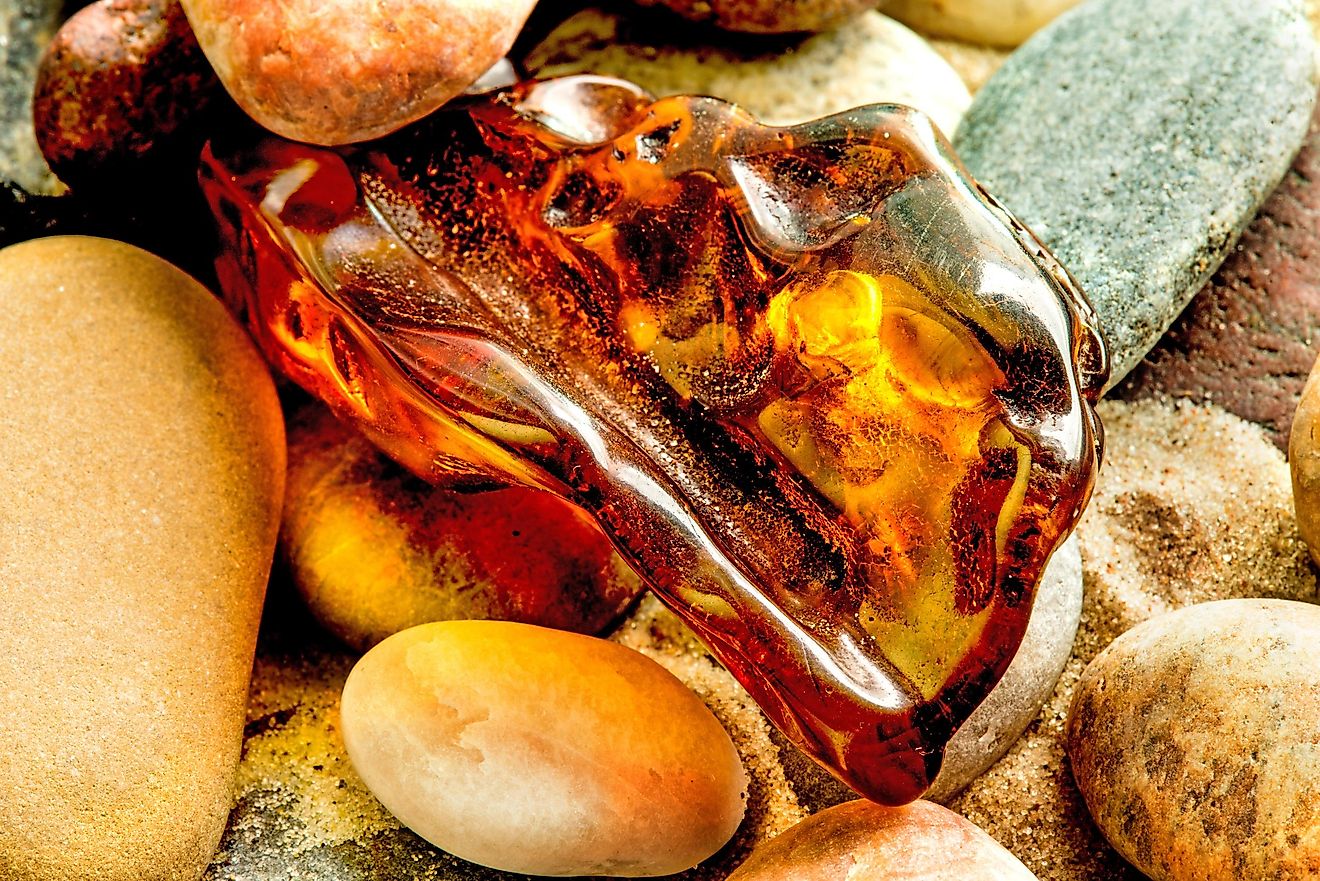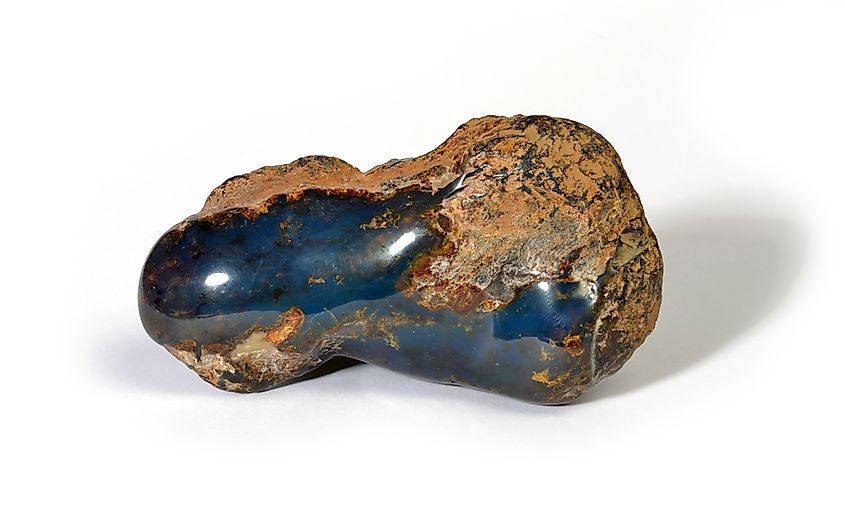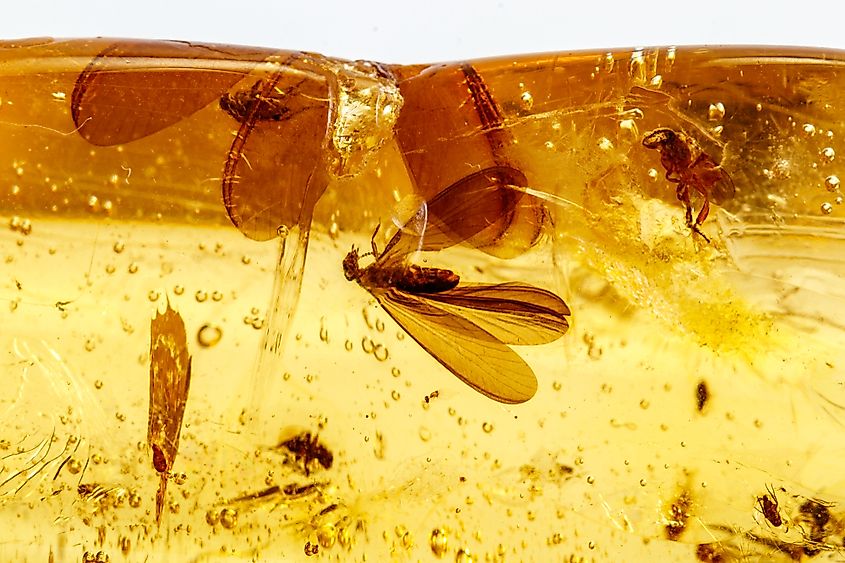Amber: Electrifying Beauty From 50 Million Years Ago

The original names for amber, Latin electrum, and Ancient Greek ēlektron mean "beaming sun." This is where the term “electricity” comes from! Amber is so well known that it even gave its name to a warm color between yellow and orange called “amber eyes.”
Amber is also one of the most famous organic gemstones: precious materials used in jewelry and decorative arts, which, however, come from biological sources. Amber is definitely unique among gemstones. Unlike those born from rocks and minerals, it is “ warm,” can accumulate static electricity, and is flammable.
How Is Amber Formed?
Amber is the fossilized resin of a specific ancient coniferous tree, Pinus succinifera. Most ambers are younger than 90 million years old, with the largest group dating back to the Eocene epoch of the Tertiary period - incredible 50 million years ago. There are, however, much older pieces: in 2009, researches unearthed 320-million-year-old amber in an Illinois coal mine.
The process of creating amber is quite sophisticated: it is initiated by high temperatures and pressure of the overlying sediments, which allows it to expel terpenes, otherwise triggering decay of the natural saps. As both heat and pressure continue, the resin eventually hardens and becomes amber. This explains why amber is much less common than the ancient resin producing trees: the resin itself must be quite resilient and able to handle exposure to weathering during the early formation stages, and the hardening conditions need to be just right.
Amber Has Gemstone-like Properties
Most people recognize amber when they see it in its typical orange, yellow or even brown variety. Less commonly, amber can be opaque whitish to lemon-yellow and nearly black. Rarely, green amber and red amber referred to as “cherry amber,” are found. Blue amber also exists but is extremely rare and only found in the Dominican Republic.

The transparency varies, and the polished pieces have resinous luster. Many amber varieties have tiny bubbles caught in it which makes it cloudy; these stones are known as 'bony amber.' Ambers with clear transparency is more desirable than cloudy ones.
Special Characteristics Of Amber
Even though amber survived millions of years and often a journey across an ocean, it is a sensitive gem requiring special attention. Substances from acid to alcohol, gasoline, perfume, and cleaning solutions can dissolve and cause erosion. Older polished pieces are known to age, taking a redder hue and sometimes suffering from surface oxidization. It would also burn if lit, producing a pleasant insense scent.
One of the characteristics specific to amber is its low density: it is so light that it floats in saltwater. This can be considered a lucky trait because it makes imitation with plastics and glass more difficult.
Where Is Amber Found?
Amber is mainly found in the Baltic region, even though some younger amber has also been found in the Dominican Republic. There are vast reserves of amber on the bed of the Baltic Sea, and amber often washes ashore there after heavy storms - to the delight of the local beachcombers. Other locations include Sicily, Romania, Burma, China, Japan, Canada, Mexico, and the United States.
Amber Cut, Shape, And Imitations
Amber is almost always presented as a finely polished cabochon. It is so soft that shaping it presents no problem at all. Still, traditionally it is preferred to give it a natural shape and expose as much of internal structures of the piece as possible, especially if it contains interesting inclusions.

Despite amber’s unique properties, imitations or artificial enhancements are common. Some of the big pieces might be, in fact, an assembly of several smaller ones. There is also composite amber made of pressed small pieces of lower quality finds. Ambers with inclusions get imitated the most commonly given the attention of the public and their higher prices. Those gemstones are much less valuable, and the inclusions are mainly modern animals.
Glimpses Into Ancient Times
There is something extraordinary about holding a piece of amber containing a creature that lived millions of years ago. The sap is runny and sticky when it is freshly formed, so it would often trap insects, plants, seeds, spiders from the times far gone. The Dominican Republic fossil amber generally contains bigger insects some of which are around 30 million years old! These pieces also typically have higher clarity, making it easier to observe microscopic details.
Colombia's amber, called copal, is often much younger than other ambers, dating back to Pliocene. Colombia gave us some fascinating finds, including a small lizard and a frog preserved in amber. With such finds at hand, many scientists have attempted to restore and study the DNA of the ancient creatures; however, no dinosaur DNA has been restored to date in real life.











